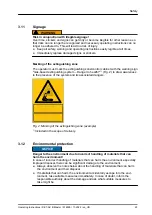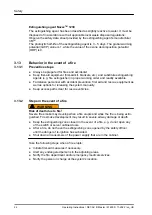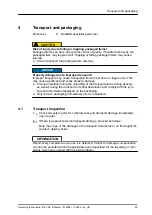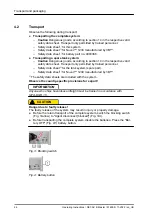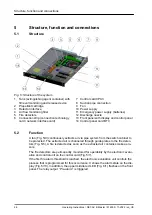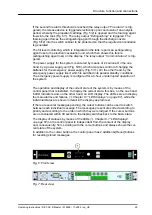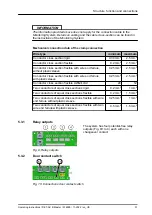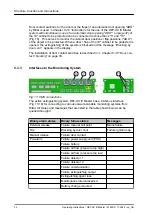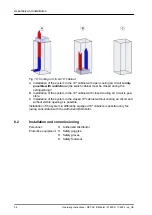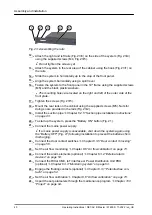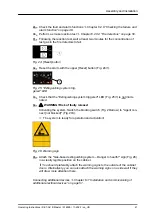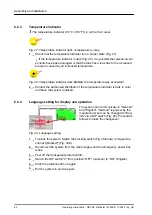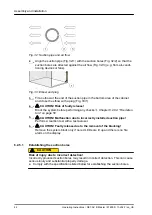
The CMC-TC is the predecessor to the CMC III and does
not
have a CAN
‑
bus inter-
face. The three states
“Failure”
“Fire alarm”
“Pre-alarm”
(Fig. 11/8) can be queried via the RJ12 connectors (Fig. 11) using a
CMC-TC I/O Unit.
5.3.4
Connection of external alarm device
An acoustic or visual alarm device can be
connected to the output "external alarm
device" (Fig. 12/10). When the second fire
alarm threshold is reached, the output
switches the system voltage (21 V to 27 V)
to the connection technology at an output
current of ≤ 500 mA.
5.3.5
Connection of external fill level monitoring and triggering of external
tank
Connection of an external extinguishing
container is only possible with variant
EFD III. The external tank must be enabled
in the program for this. When activated, the
output (Fig. 13/11) switches the system
voltage (21 V to 27 V) to the connection
technology at an output current of
≤ 500 mA (with a maximum duration of 2
seconds).
5.3.6
Manual call point connection
An externally accessible manual release
device (e.g. manual call point) can be inte-
grated in the manual call point connection
(Fig. 14/12).
When connecting a release device,
observe the 1.8 k
Ω
terminating resistor.
Fig. 12: Connection of external alarm
device
Fig. 13: Connection monitoring and trig-
gering of external tank
Fig. 14: Manual call point connection
Structure, function and connections
Operating Instructions / DET-AC III Master / 916005 / 11-2022 / en_US
33





